- Home
- William C. Dietz
Red Sands Page 2
Red Sands Read online
Page 2
The gunner’s sight was compatible with thermal imaging as well. Thermal images were displayed on Prevo’s eyepiece along with the range and integrated into the computerized fire control system.
Prevo’s controls consisted of two pistol grip “Cadillacs.” By squeezing them the gunner could traverse the turret, elevate the main gun, and depress it.
The driver’s position was located at the center-front of the hull. Valdez was sitting in the so-called “Lay-Z-Boy” seat in the semi-reclining position, which was a necessity anytime the tank was operational. His station was equipped with a full array of gauges for monitoring the vehicle’s fluid levels, batteries and electrical equipment.
There were three observation periscopes to either side of the driver plus a central “Starlight” periscope for night vision. Thanks to the periscopes Valdez had a 120-degree field of view.
Scott couldn’t hear the plane’s PA system, but he felt the wheels touch down, and ordered Valdez to start the engine.
Scott felt a sense of relief as the Honeywell AGT1500C multi-fuel engine roared to life. That had been one of his concerns. What if the engine wouldn’t start? What if they were on the ground, with no way to get the ACE off the plane? What if the enemy was shooting at them?
The plane, and therefore the tank, shook violently as the C-17’s wheels rolled over a rough spot. The Globemaster came to a stop, light flooded the cargo bay as the hatch opened, and a green “go” light appeared. Soldiers acting as ground guides were visible left and right.
“Hit it,” Scott ordered. “And, when you see a rocky hill, head for it. That’s the rally point.”
***
Finn had another reason to thank the Air Force. The second C-17 had hit its mark, the back hatch was open, and the M-1’s snout had started to emerge. A lot of tank crews named their tanks and their cannons. And this 105mm tube was called “Buster Brown.”
The cannon could fire ten rounds a minute, reach targets that were more than two miles away, and hit them with HEAT (high-explosive anti-tank) or sabot rounds.
And that’s why the AXIS ACE was on Plane 2. Now, as the M-1 rumbled onto the lakebed, Finn had a new and extremely powerful weapon at his disposal.
That was the good news. The bad news was that the ACE, as well as the rest of the tank platoon, was under the command of a butter bar named Scott. An extremely earnest young man who had all the right stuff with the exception of combat experience.
But that’s how the war was. As veterans died newbies were sent to replace them. Some lived long enough to become veterans. Then they died and so on.
Engines screamed and dust flew as the C-17 taxied away. It was in the air moments later.
“Top Hat, in from the north, sir,” Pinnick announced.
Rather than repeat his previous error Finn kept his thoughts to himself.
Plane 3 was carrying his XO, Captain Marcie Owens, First Sergeant Sam Dyson, Stryker 4, and two Bradley fighting vehicles—along with a platoon of infantry. Enough vehicles and personnel to put up a good fight.
“Look!” a PFC said. “A helicopter!” He was pointing south and, rather than the attack helicopter Finn feared, it was a two-seat observation helo. “This is Six,” Finn said over the company freq. “Stryker 2 is closest. Say hello with a Stinger. Over.”
It was too late to keep the pilot or observer from reporting what they’d seen. But Finn didn’t want them to witness the next landing.
“Roger that,” Truck Commander 2 said. “Standby. Over.”
Trucks 2 and 3 had the civilians herded into a single location by then, which meant it was possible to free Truck 2, and the soldiers in back. Two men spilled out with a preloaded launcher and were waiting when the helo passed over.
That’s stupid, Finn thought. Civilians perhaps? Dispatched to take a look-see?
It didn’t matter. A five-foot-long missile leapt out of the launcher, produced a puff of gray smoke, and went looking for heat. There was a flash of light, followed by a loud bang, as the warhead struck the helo. Pieces of burning debris twirled to the ground. Lieutenant Pinnick offered an epitaph. “Asshole down,” she said unsympathetically. “We’re one-for-one.”
Finn made a mental note. While Pinnick was small of stature, and a member of the chair force to boot, she was a no-nonsense badass.
***
Security Center, Natanz Nuclear Facility, Iran
Lieutenant Colonel Shihaab el-Sattar was standing behind a tech when the video feed from the helicopter snapped to black. “Goh! (Shit!) The fucking Americans have landed. And you can bet they plan to come here.
“Sound the alarm. Tell the watch commander to take the reaction force and head for the lake. Order the company commanders to man their defensive positions. What’s on radar?”
“Half a dozen planes, sir. They’re circling to the north.”
“Waiting to land,” el-Sattar mused. “So, they aren’t going to bomb us. They plan to capture the facility. Send for Captain el-Zia. We’ll put him to work.”
***
Namak Lake, Iran
“… The clever combatant imposes his will on the enemy, but does not allow the enemy’s will to be imposed on him.” That was what Chinese general and strategist Sun Tzu had written in approximately 450 BC. And it was true. In Finn’s opinion anyway. That’s why he gave orders to head for the Natanz Nuclear Facility rather than wait for the last C-17s to land.
He was fully cognizant of how risky the decision was. His supply vehicles and a platoon of Bradleys were still flying circles to the north. If they landed, and were flanked, Strike Force 3 would suffer a huge loss. Especially where the unit’s supplies were concerned.
As for the troops who were still in the air, they would be a loss, but not a significant one. That was a cold-blooded thought. And Finn wished it hadn’t occurred to him,
But the truth was that Saudi Prince, Captain Talha al-Awan, and his men had been attached to the unit as a way to show allied forces that the House of Saud was doing its share and taking risks like everyone else. Never mind the fact that Prince al-Awan ranked number 1,782 among the roughly 2,000 family members said to be important.
To his credit Prince al-Awan had a degree from a prestigious college in the UK, a plummy accent, and a good working knowledge of Mediterranean resorts.
But his military experience consisted of a ninety-day training course, parading about in his uniform, and flirting with dark eyed women. So, Finn left Dyson behind with two Bradleys, and orders to hold the LZ until the prince and his vehicles arrived.
Now, as the main force headed south, the Strykers led the way. They were followed by the tanks and the Bradleys. Finn was standing in the squad leader’s hatch located behind the spare tire that lay flat on the deck. The vehicle’s name was “WAR GIRL,” an obvious nod to the truck’s commander Carol Chan, who stood in her own hatch.
WAR GIRL was at the tip of the spear, with the other vehicles following behind, each trailing a plume of dust. Thanks to a wealth of pre-mission satellite imagery, Finn knew the route by heart. WAR GIRL would turn left onto one of two dirt tracks soon, and continue south, toward the town of Kashan. The Natanz facility was located twenty-five miles southeast of the town.
But first it was necessary to drive up and over a rocky ridge. A smart defender would be waiting at the top in hopes of catching the first vic coming upslope with its underbelly momentarily exposed. After that, well, Finn wasn’t too worried. On flat ground, and with room to spread out, his vehicles would be able to give a good account of themselves.
Finn held his breath as WAR GIRL turned onto a well-worn track and began to climb. That was when Finn realized his mistake. Even though the company was equipped with two types of drones, none were in the air. He had failed to anticipate the need for a Raven UAV early on. What a dumbass, Fin thought, as he was thrown from side-to-side.
Gravel sprayed out from under the WAR GIRL’s tires as she roared upslope with her 30mm autocannon pointed at the clear blue sky. Finn g
ritted his teeth and waited for a hail of fire to lash down at them from above. It didn’t.
To Finn’s relief the only vehicle waiting for them was a beat-up truck carrying a dozen workers—following the other track north. They turned to look as the unfamiliar vehicle passed them. You are one lucky sonofabitch, Finn admonished himself. Don’t make that mistake again. “This is Delta-One. Targets at 12 o’clock. Over.” Chan announced.
The truck commander was correct. A cloud of dust was visible up ahead. But what sort of vehicles were responsible for it? Military? Or civilian?
“This is Six,” Finn said. “Hold your fire until we have a positive ID. Over.”
Meanwhile, as the WAR GIRL continued to race ahead, the rest of the company was coming up over the ridge. Lieutenant Maya Cobb was the Stryker platoon’s CO. She was riding in Stryker 2. “This is Delta-Six,” Cobb said. “And I have an angle on them. The vehicles are similar to jeeps. And it looks like they’re armed with Toophan missile launchers. Over.”
The entire company had been forced to sit through a two-hour lecture on Iranian vehicles and weapons six days earlier. So, anyone who’d been paying attention, knew that Toophan missiles were unlicensed copies of American TOW missiles.
That meant the wire-guided weapons would be effective against armored vehicles, including tanks. But it wouldn’t be easy for the Iranian gunners to acquire and track moving targets from the back of a bouncing jeep. “This is Six,” Finn said. “Roger that. Strykers fall back. Tanks will engage. Over.”
***
Aboard the AXIS ACE, southbound to Kashan
Lieutenant Scott was sitting aboard the tank AXIS ACE as it ran southbound towards Kashan. “Gunner, HEAT, vehicles ahead.”
Prevo’s heart was racing. The dust made it hard to see or lase the target. He switched to thermal, the mode normally used at night. “Identified.”
Then it was loader Bob Tatum’s turn. The 105mm shell weighed about 18 pounds and slid in smoothly. The next step was to raise the arming handle located next to the breach. “Up!”
Scott was ready. “Gunner take over.”
Prevo had one of the oncoming vehicles dead to rights. The thermal image was displayed on his eyepiece along with the range—all of which was integrated into the computerized fire control system. “On the way!” And, as Prevo said, “way,” he pulled the trigger. That sent a 105mm HEAT round down range.
The result, as seen through the thermal sight, was an explosion of heat. Prevo uttered a whoop of joy. Scott’s hands were trembling. He checked. Yes! His pants were dry.
***
Aboard WAR GIRL, southbound to Kashan.
There was another explosion as the tank ROLLING THUNDER, commanded by Allan Fitch, scored a hit. Then the Strykers were in among the rest of the enemy vehicles firing their autocannons and machine guns. The engagement was over in ten minutes. And, as far as Finn knew, the Iranians never got a missile off.
Finn heard distant machinegun fire as the Bradleys came up on the scene and finished the job. Why the mismatch, Finn wondered? Poor Intel? Bad judgement? Or a lack of resources?
Perhaps the Iranians had assumed that an attack, if it occurred, would come from the air. And that would have been the case had it not been necessary to search the site for nuclear weapons.
Finn’s theory was consistent with the satellite imagery he’d seen. Huge antiaircraft guns, of the sort rarely seen anymore, ringed Natanz. And modern SAM (surface-to-air) missile launchers were present too. But there were few obstacles of the sort intended to block infantry or ground vehicles.
So, maybe the Iranian security forces didn’t have any armored fighting vehicles or tanks on the scene. If so, that put the action in a different light. The soldiers who rode open jeeps into battle hadn’t been foolish. They’d been brave. Exceedingly so.
Suddenly Finn was faced with a choice. Should he forge ahead? And take advantage of the unit’s momentum? Or pause, and wait for the rest of the unit to catch up? That included the Saudis, three supply trucks, and the all-important tanker. Fuel was the company’s life blood. In the final analysis the decision was no decision at all.
Finn ordered the company to lagger up with tanks spread evenly around the perimeter and the lighter vehicles situated in between them.
At that point half the company was freed to, in the words of Stryker Platoon Sergeant Revell, “Eat an MRE, try to process it, and take a dump—in that order.”
Finn made the rounds, congratulated his troops on their victory, and listened to what his noncoms had to say. The essence of which was that some vehicles required maintenance and the unit was low on water. A problem that would be temporarily resolved once the supply trucks arrived.
It was with a feeling of relief that Finn welcomed two American Bradleys, one carrying his XO Marcie Owens, followed by a gleaming Mercedes-Benz G-Class SUV with Captain Talha al-Awan sitting in back. After the vehicle came to a stop the driver got out to open the rear door for al-Awan.
Finn was staring at the scene when Owens joined him. “That’s right, sir … Captains rate a Benz. Where’s mine?”
“Who gave him permission to bring it?” Finn demanded.
“He did,” Owens replied calmly.
That was when al-Awan approached, rendered a salute that looked like a wave, and announced himself. “Prince al-Awan at your service, sir.”
Finn was fuming and fought to maintain his composure. “While serving in this unit you are a captain not a prince. Snipers uses salutes to pick targets. And, last but not least, your place is with the men you lead. Is that clear?”
Captain al-Awan was about to argue the point, when he saw Owens shake her head. “Yes, I understand.”
Finn’s eyes narrowed. “I understand, sir.”
“I understand, sir,” al-Awan said contritely. “May I ask a question?”
“Shoot.”
“What will become of my Benz?”
“Doctor Parcel will use it as an ambulance,” Finn replied. “And, if it survives, you can take it home when the mission is over. At your expense.”
The Saudi’s mouth opened and closed like that of a gasping fish. Then he started to salute, thought better of it, and backed away. “Yes, sir. Thank you, sir.”
“You’re welcome,’ Finn said. “See to your men. Give them a chance to eat. Be ready to depart in fifteen minutes.”
“Well,” Owens said, as al-Awan hurried away. “That was fun. Now what?”
The first of the hulking MTVR MK23 6x6 cargo trucks arrived at that point and served to trigger Finn’s memory. “Put a Raven into the air,” Finn replied. “Tell Emery to pull off a truck and send it forward.”
“Will do,” Owens said, and hurried away.
That was when Finn saw Keaton. She was on foot and carrying a compact video camera with an attached mike. Where had she been? At the scene of the battle—that’s where. Shooting footage of the burned-out wrecks, the sprawling bodies, and the usual battlefield detritus. Photos, glasses, and prayer books.
Keaton looked small and vulnerable against the vast sweep of desert. Why? Finn wondered. Why, after the Battle of Prague, was she still at it? And why did he care?
***
Amol, Iran
Russian Lieutenant (Provisional) Alexi Borin had been seasick for two days. And what he perceived as a personal weakness was why he hated everything about the sea. Even a small sea like the Caspian.
The Caspian was a kidney shaped body of water with mother Russia to the northwest, Kazakhstan to the northeast, Azerbaijan to the southwest, Turkmenistan to the southeast, and Iran in the south. All of which made the body of water strategically important, and a route that Russia could use to send troops and supplies to Iran and Pakistan.
That was why Borin was standing on a dock just north of Amol, Iran, watching his MAZ tank carriers growl off a civilian ferry. The vessel had been used to transport articulated lorries prior to the war, which meant it could handle twelve tank transporters. But just barely.
/> Borin’s supply vehicles had been sent ahead and were already in Amol. That was important because the tanks would be worthless without them.
The MAZ design dated back to the ‘60s. And, in spite of their age, the tractor-trailers were still the best. A MAZ tank transporter could tow a trailer carrying a main battle tank on roads and rugged terrain. The newer KamAZ-65225s by contrast could only operate on paved roads. As if every battle would take place near a highway!
Of course, you are biased against everything new, Borin told himself. You joined 23 years ago and things have changed since then.
Once the last MAZ cleared the ferry, Borin hiked upslope towards the support vehicles beyond. The sky was clear, but for how long? The cursed Americans owned the sky and would like nothing better than to kill his tanks. His trucks were blocking traffic, but Borin didn’t give a shit. The pridurki (shithead) Iranians could wait.
Borin was popular with his troops and some of the drivers waved. There were two reasons for that. First, Borin treated them as well as any Russian soldier was treated, which wasn’t very well. Second, he was an ex praporschik (warrant officer), and therefore likely to be more competent than a newly minted second lieutenant of the sort the officer factories were churning out. Borin grinned, and waved back.
His support vehicles consisted of three Ural-4320 medium cargo trucks, a tanker, a field ambulance, and the heavy-duty GAZ Tigr infantry mobility truck that served as his command vehicle. It had a two-person crew plus radio and drone operators. Both of whom sat in back with their gear.
Borin’s orders were to join an Iranian infantry brigade in Tehran where the Russians would help defend the capitol. That would be a dangerous assignment if the Allies invaded Iran. But how likely was that, after the disasters in Iraq and Afghanistan?
No, odds were that Borin’s tanks would log more miles in parades than they would in combat. And that beat the hell out of rolling into the meatgrinder in Western Europe. A place where a tanker’s estimated life expectancy was about three days.
Borin slid into the passenger seat. A mug of hot tea was ready for him. He turned to his driver. “All right, Garin … It’s getting late. We’ll have to find a place to spend the night. Then, it’s on to Tehran, where the women are waiting for us.”

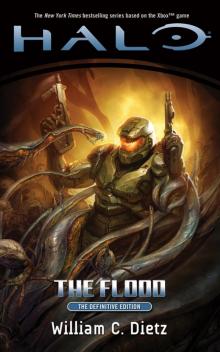 Halo: The Flood
Halo: The Flood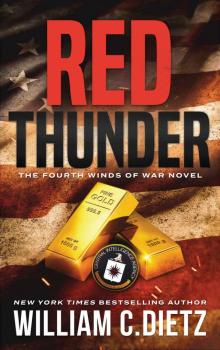 Red Thunder (Winds of War Book 4)
Red Thunder (Winds of War Book 4)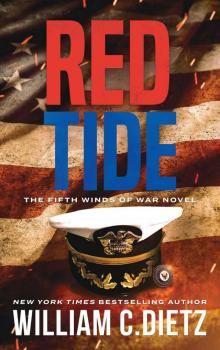 Red Tide
Red Tide Graveyard
Graveyard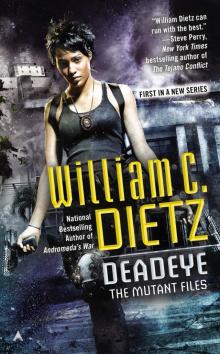 Deadeye
Deadeye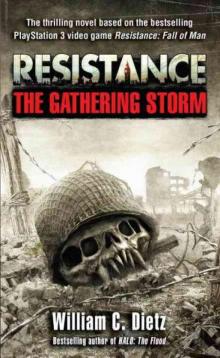 Resistance: The Gathering Storm r-1
Resistance: The Gathering Storm r-1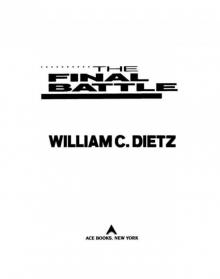 Legion Of The Damned - 02 - The Final Battle
Legion Of The Damned - 02 - The Final Battle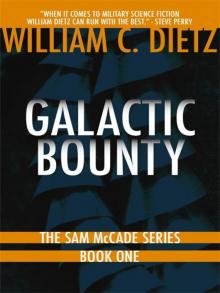 Galactic Bounty
Galactic Bounty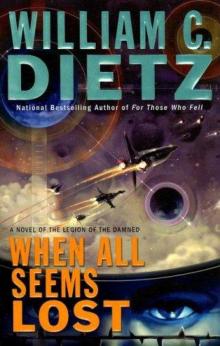 When All Seems Lost
When All Seems Lost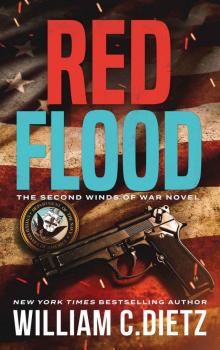 Red Flood (Winds of War Book 2)
Red Flood (Winds of War Book 2)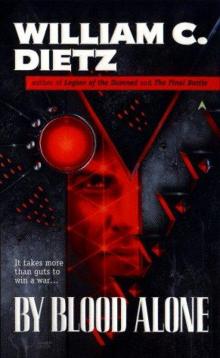 By Blood Alone
By Blood Alone Andromeda's War (Legion of the Damned Book 3)
Andromeda's War (Legion of the Damned Book 3) Hitman: Enemy Within
Hitman: Enemy Within Bodyguard
Bodyguard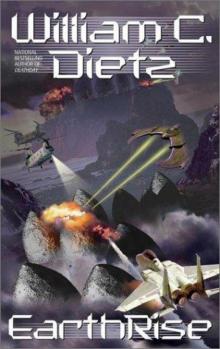 EarthRise
EarthRise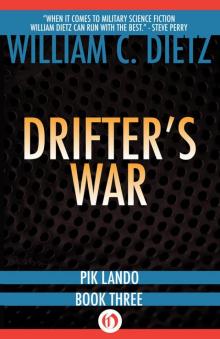 Drifter's War
Drifter's War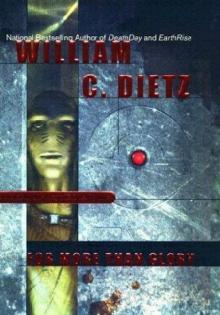 For More Than Glory
For More Than Glory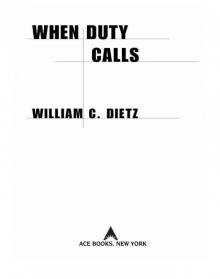 When Duty Calls
When Duty Calls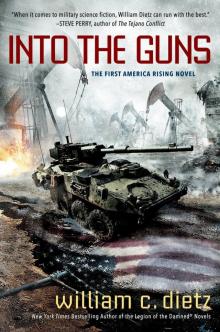 Into the Guns
Into the Guns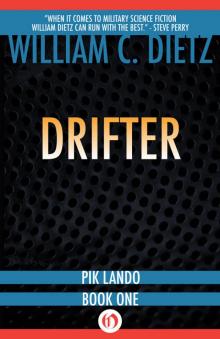 Drifter
Drifter Ejecta
Ejecta When All Seems Los lotd-7
When All Seems Los lotd-7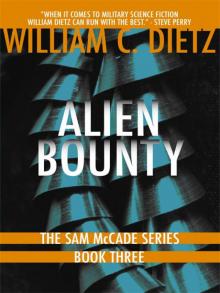 Alien Bounty
Alien Bounty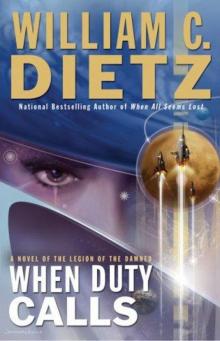 When Duty Calls lotd-8
When Duty Calls lotd-8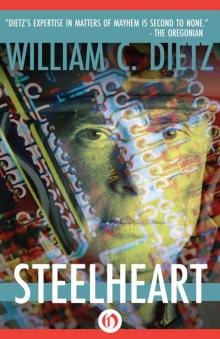 Steelheart
Steelheart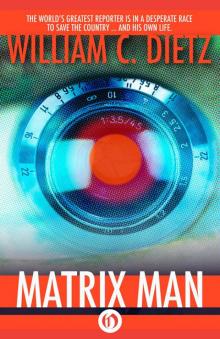 Matrix Man
Matrix Man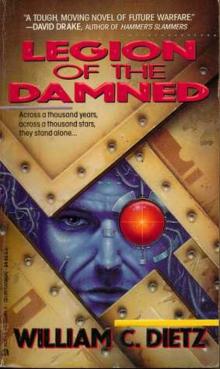 Legion of the Damned
Legion of the Damned Snake Eye
Snake Eye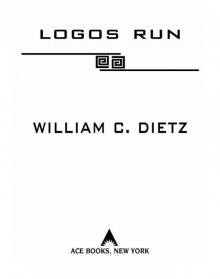 Logos Run
Logos Run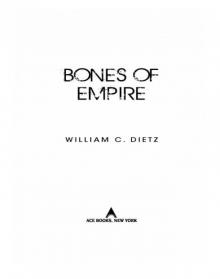 Bones of Empire
Bones of Empire McCade's Bounty
McCade's Bounty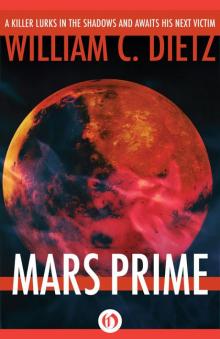 Mars Prime
Mars Prime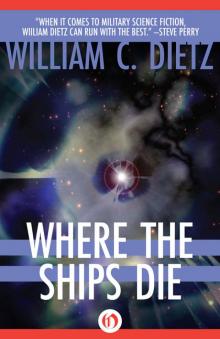 Where the Ships Die
Where the Ships Die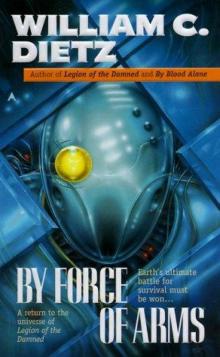 By force of arms lotd-4
By force of arms lotd-4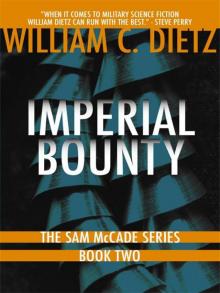 Imperial Bounty
Imperial Bounty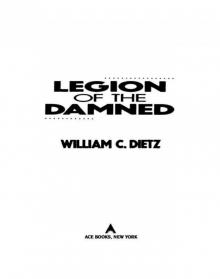 Legion Of The Damned - 01 - Legion of the Damned
Legion Of The Damned - 01 - Legion of the Damned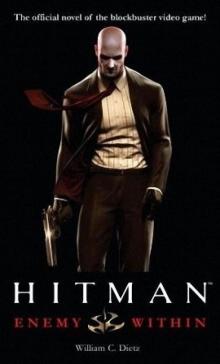 Hitman: Enemy Within h-1
Hitman: Enemy Within h-1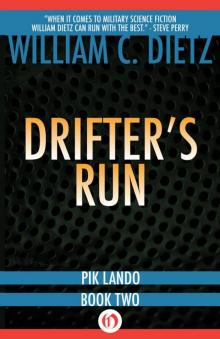 Drifter's Run
Drifter's Run A Fighting Chance
A Fighting Chance McCade on the Run (Sam McCade Omnibus)
McCade on the Run (Sam McCade Omnibus)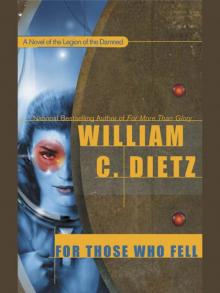 Legion Of The Damned - 06 - For Those Who Fell
Legion Of The Damned - 06 - For Those Who Fell Halo. Flood
Halo. Flood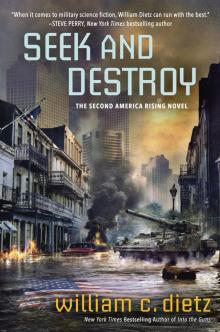 Seek and Destroy
Seek and Destroy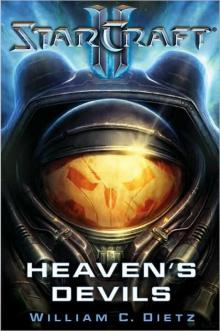 Heaven's Devils si-1
Heaven's Devils si-1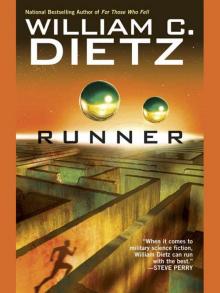 Runner
Runner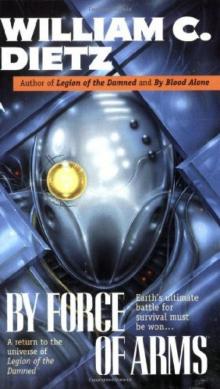 By Force of Arms
By Force of Arms A Hole in the Sky
A Hole in the Sky The Seeds of Man
The Seeds of Man Andromeda's Fall
Andromeda's Fall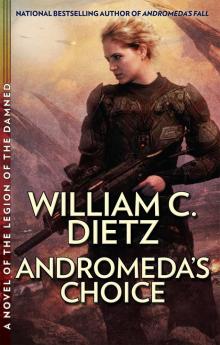 Andromeda’s Choice
Andromeda’s Choice Prison Planet
Prison Planet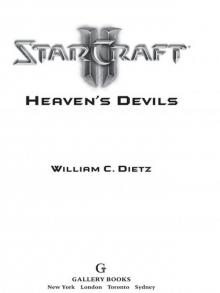 Heaven’s Devils
Heaven’s Devils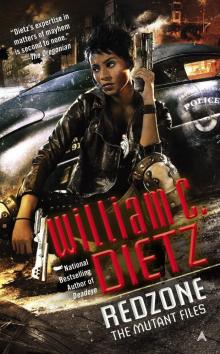 Redzone
Redzone Jedi Knight
Jedi Knight